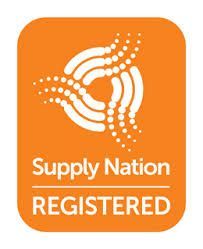Safety Switches
A safety switch is installed to protect against accidental contact with electrical appliances and other equipment in a typical household. While Australia mandates the installation of safety switches in every home, 4 out of 10 families surprisingly have no safety switches installed. Of the remaining 6, most of them do not have their safety switches regularly maintained and tested.
Electricity is hazardous. A simple surge of electricity can cause significant injuries or death to you and your family. It can also cause electrical fires and other dangerous accidents.
Safety switches are present to save you and your family from coming in contact with electricity – something you cannot see. They monitor your home’s electrical flow through a circuit; once there is an electrical fault, the safety switch detects that in as fast as 0.03 seconds and immediately shuts off your home’s electrical supply.
When there are faults in your wiring, your appliances or your other electrical equipment, safety switches aid electricians in repairing and maintaining them. In addition, safety switches provide electricians with the advantage of quickly turning the power on and off to proceed with the necessary repairs and maintenance.
The switch is enclosed in a box, adding an extra layer of protection against temperature, humidity, and other environmental conditions. The housing also ensures the safety switch’s longevity and helps save space.
NOTE: Safety switches only act as backup protection against most electric shocks and may not protect all your wiring and electrical appliances.
Types of Safety Switches
Different safety switches have their distinct purposes and levels of protection they provide. The three main types of safety switches are:
- Switchboard Safety Switches – These are installed on individual circuits and protect against faults that may happen across selected electrical circuits in your home or to your electrical appliances and extension cords plugged in your power points.
- Powerpoint Safety Switches – Powerpoint safety switches replace your existing power points at home. They protect against faults and damages that can happen to appliances and power cords.
- Portable Safety Switches – This type of safety switch is used by electricians and construction workers who require electrical power for their power tools and other heavily dependent electrical equipment. However, these portable safety switches only protect you from faults in the equipment directly plugged into them.
Safety Switches Testing and Maintenance
Just like all other electrical devices, safety switches break down over time. Under the Australian Standards, safety switches require regular testing and maintenance to improve their performance and extend your home’s protection against electrical shock.
- The Push-button Test – This testing procedure must be done every six months to keep the safety switch from ‘sticking’, ensuring an easier way to flip the switch up and down.
- The Trip Time Test – This testing procedure measures the time it takes for the safety switch to respond when a fault occurs. The Trip Time test is required every two years per the Australian Standards AS/NZS 3760 and must only be performed by a licensed electrician. The Trip Time Test is the only test that indicates whether or not your safety switch is appropriately functioning.
Avoid Electric Shock and Install Safety Switches Now!
Baycoast Electrical and Control Solutions is dedicated to helping Batemans Bay homeowners safe and protected from electric shock and other electrical-related disasters. As your
master electricians , we would love to
answer and discuss any questions regarding safety switches and other electrical-related concerns.
































